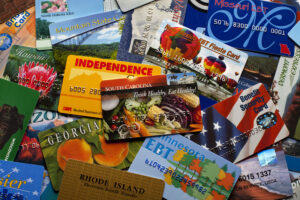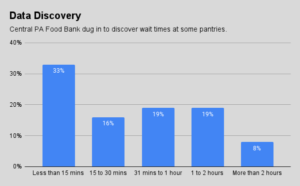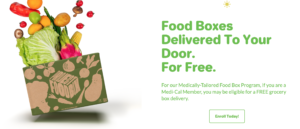Food banks are missing easy opportunities to connect with younger donors, according to a report from the donor management software provider Bloomerang.
Bloomerang recently donated $25 to 50 different food banks in the Feeding America network in an effort to better understand the donor experience – from the moment of donation through the next 30 days.
One surprise, according to James Goalder, Partnerships Manager at Bloomerang, was that only 16% of Feeding America network members offer more than one payment option. That’s a shortcoming when it comes to serving Millennials (the first generation to grow up with the internet) and Gen Z (the first generation to grow up with both smartphones and social media).
With these younger demographics, having a variety of payment options, such as PayPal or contactless tap payments, makes it easier and more accessible for potential donors to give, Goalder said.
In addition, traditional direct mail fundraising should be upgraded to better suit younger donors, Goalder said. Adding a QR code to direct mail appeals to support Venmo or other digital payments is one way of making direct-mail donations more convenient, for example.
Younger donors may also find it easier to donate smaller amounts on a monthly basis, underscoring the importance of emphasizing recurring monthly giving. Bloomerang found that only 34% of the food banks it donated to asked for a second donation within the first thirty days. “That’s a great time to ask for a monthly gift,” Goalder said.
Feeding America food banks did a good job of creating deeper emotional connections to donors by providing the option of making a tribute or memorial donation, with 82% of them doing so. However, only 14% gave the option to contribute to a specific fund. “In a lot of cases, if you communicate to donors that a specific fund or initiative needs immediate help, it can trigger more giving,” Goalder said.
Bloomerang pinpointed the donation receipt as the “perfect opportunity” to show donors that they are valued on an individual level. It found that 98% of Feeding America network members sent donation receipts, but only 70% of them were personalized. “It’s crucially important for nonprofits to find ways to show donors how much they help and how much their support means to the nonprofit,” Goalder said.
A simple and effective way to engage donors is to give them the option to sign up for a newsletter, which 44% of the Feeding America food banks did. Including a subscribe button on the donation page or having it as part of the donation form makes it easy for donors to sign up.
Second Harvest Food Bank of Central Florida has enhanced its donor experience by focusing on the first 60 days after a donation, said Maria Shanley, Director of Marketing and Data Management. “We strive to create lasting relationships with our donors, get them more involved, and make sure they’re happy with their experience,” Shanley said. “This is important for building a community of people who care deeply about the work we do together.”
Second Harvest Food Bank of Central Florida’s donor program begins with the acquisition phase, in which it solicits new donors from its direct marketing program, virtual food drive campaigns, events, and volunteer programs, Shanley said. From there, donors move into the cultivation phase, where engagement is deepened through personalized communications, including thank-you letters, calls, welcome newsletters, and donor impact reports.
From there, donors move to the stewardship phase, which focuses on showing appreciation through exclusive updates, recognition in newsletters, emails, and sometimes media stories. “Understanding why donors give through conversations helps tailor our interactions to suit their preferences better and enhance their connections to the mission,” Shanley said. “We can build a stronger community dedicated to fighting hunger by nurturing these relationships.” – Maura Keller
Maura Keller is a Minneapolis-based freelance writer and editor.
Like what you’re reading?
Support Food Bank News
This article was made possible by the readers who support Food Bank News, a national, editorially independent, nonprofit media organization. Food Bank News is not funded by any government agencies, nor is it part of a larger association or corporation. Your support helps ensure our continued solutions-oriented coverage of best practices in hunger relief. Thank you!
Connect with Us:










